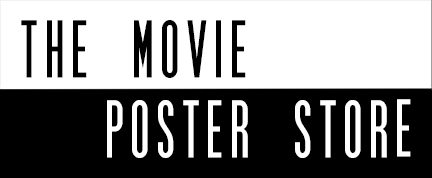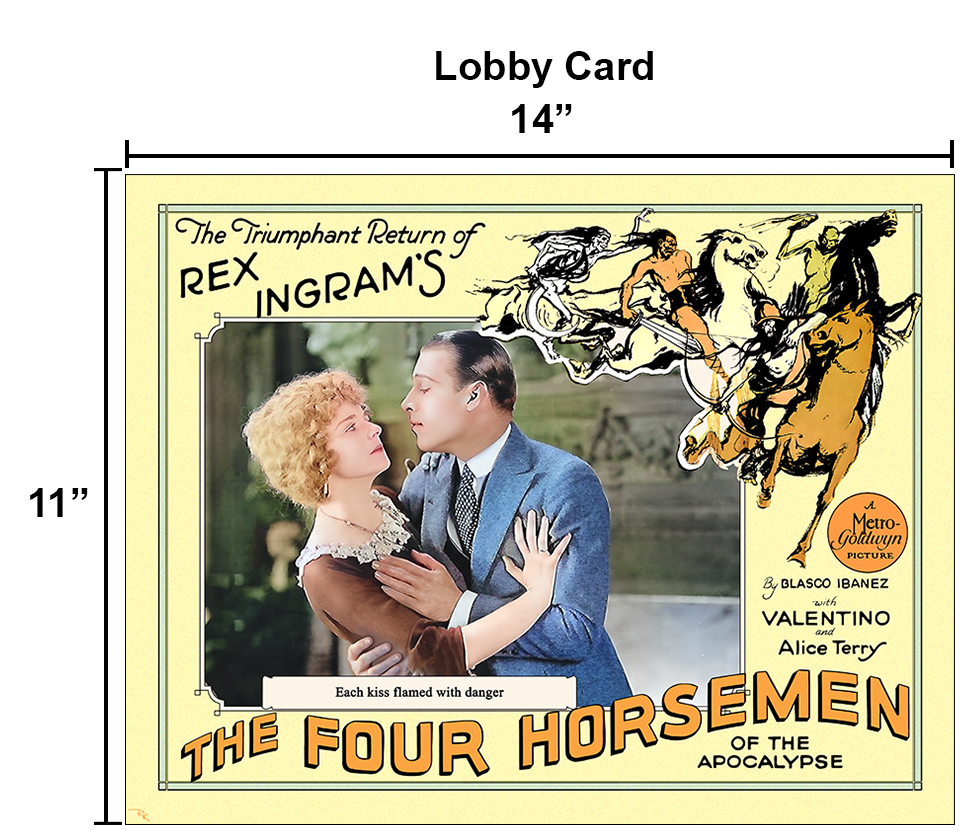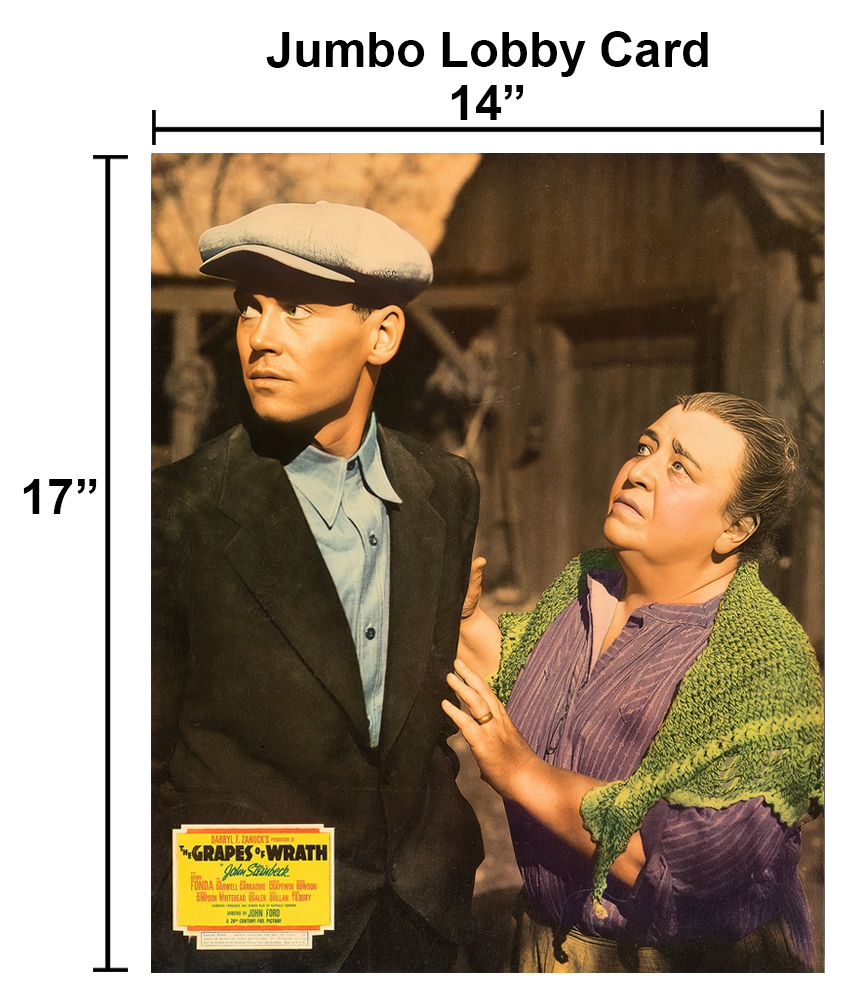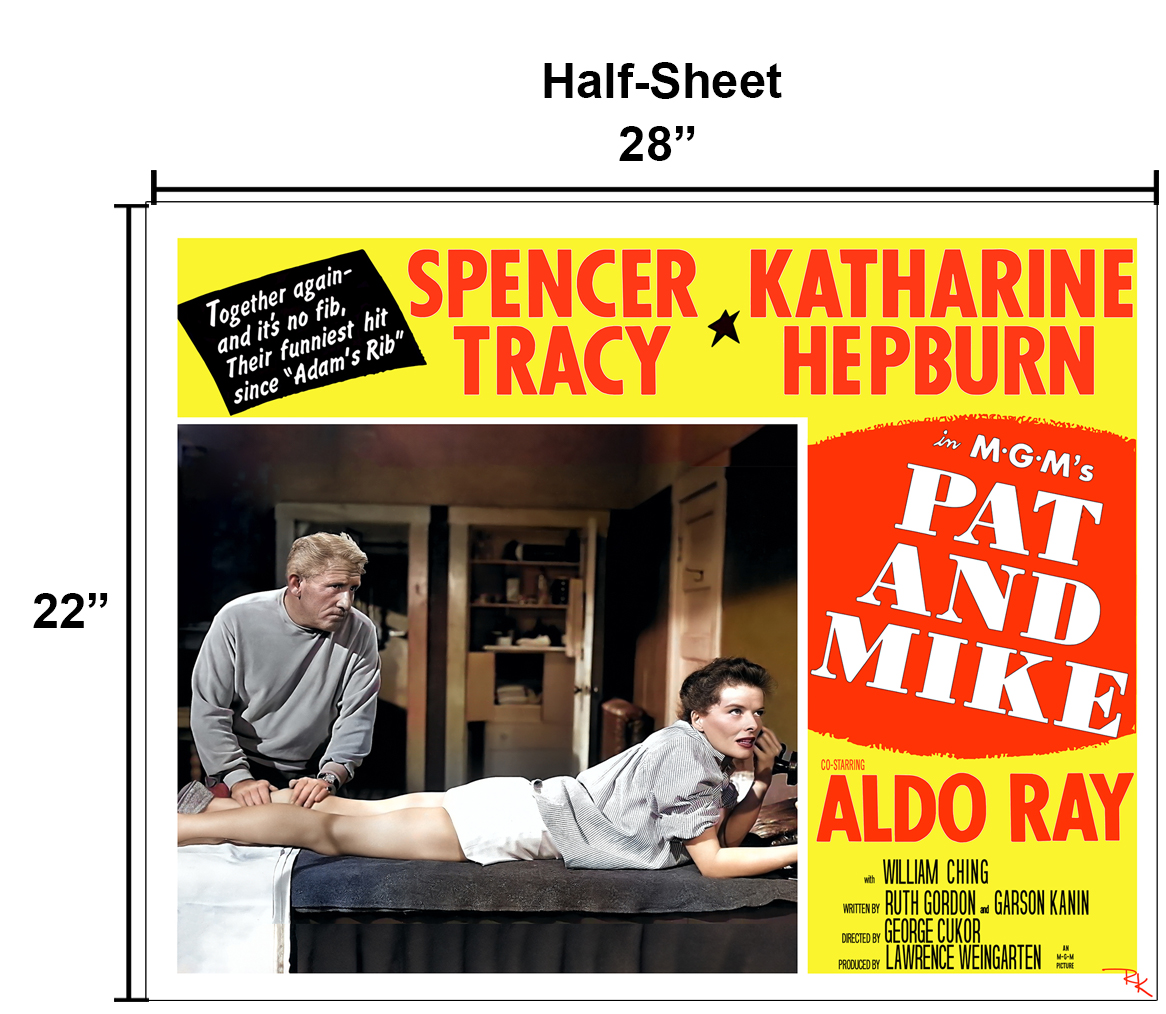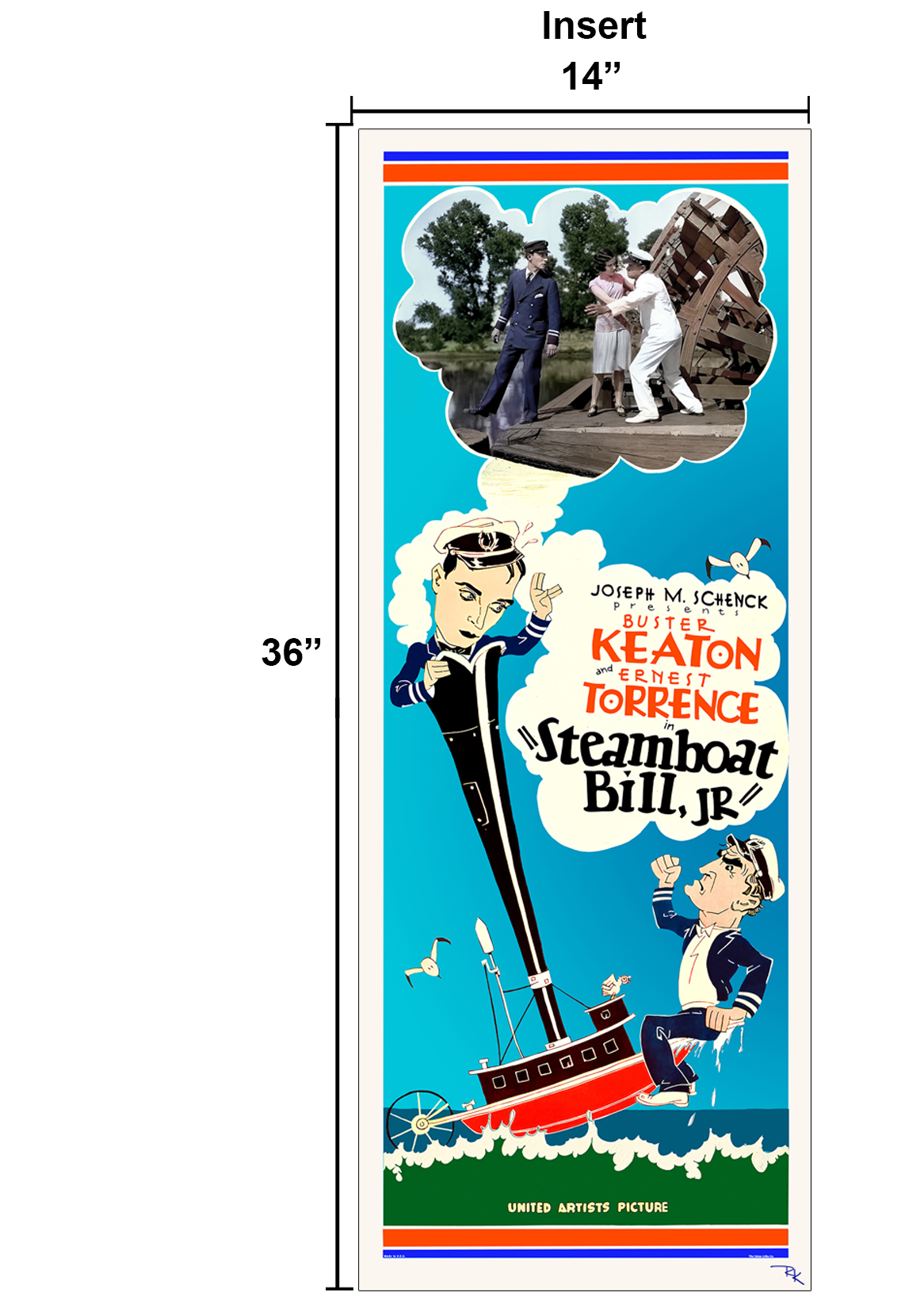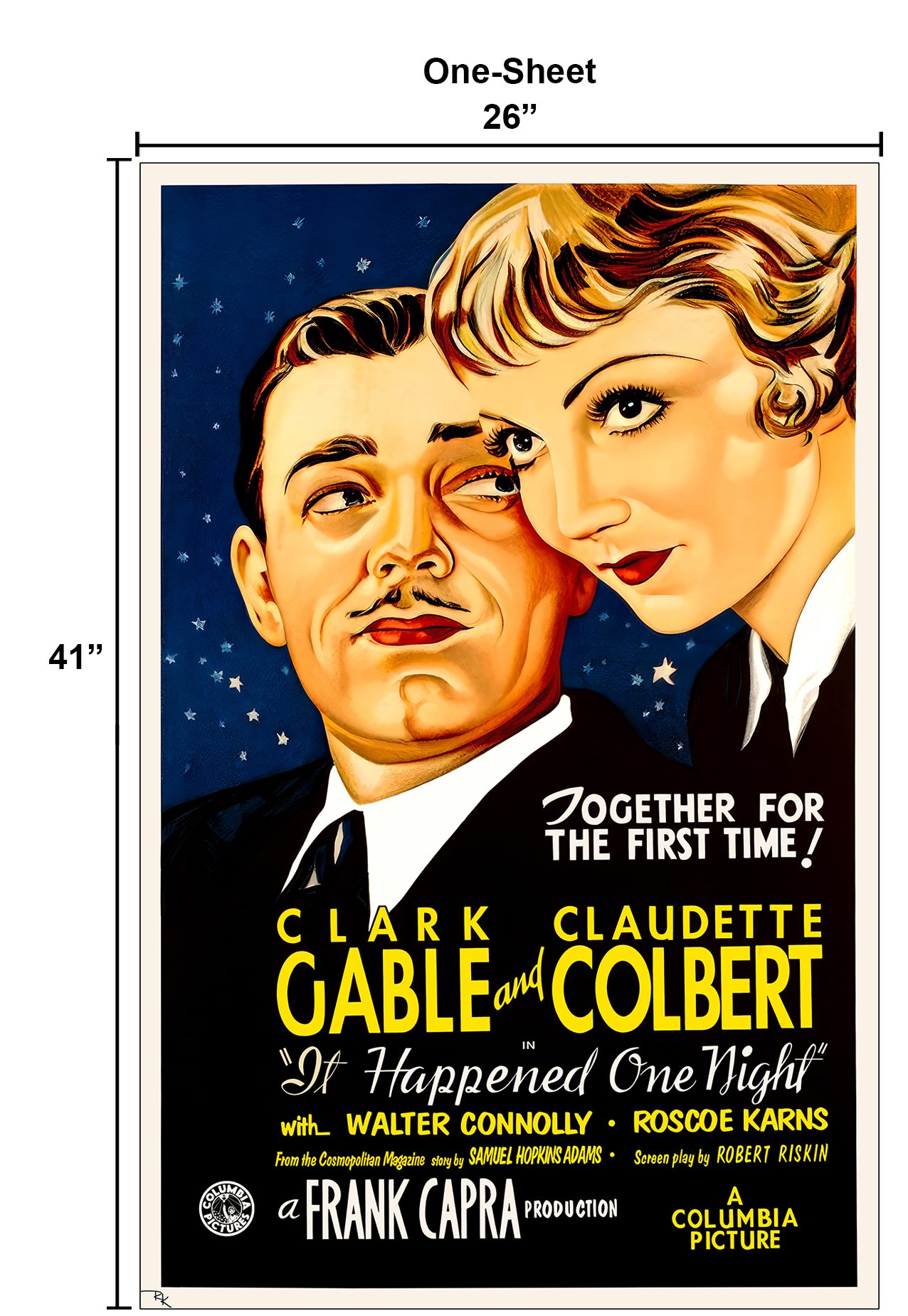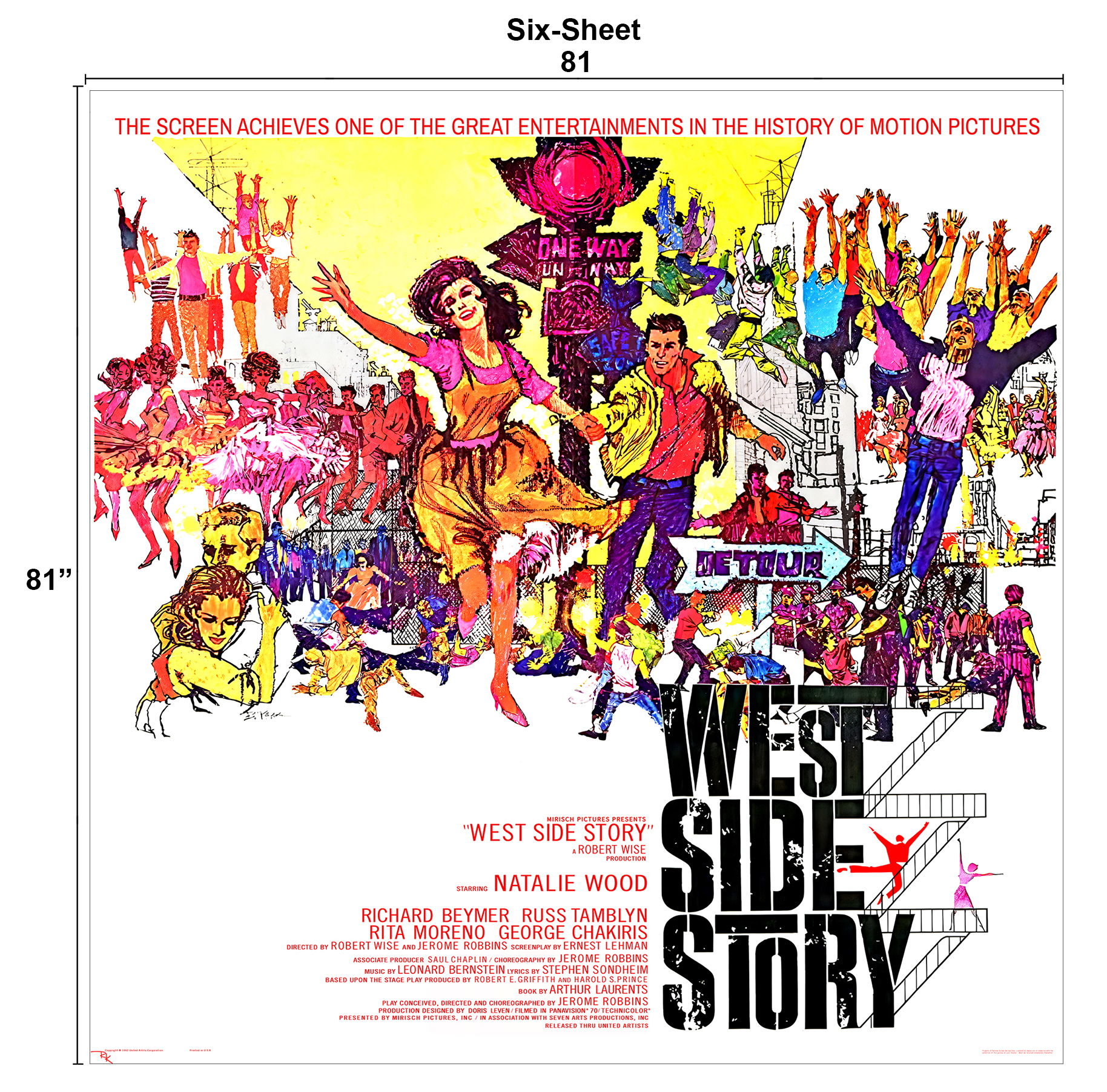Posterology A Quick Primer on Posters, Their Uses and Sizes

The Movie Poster
A movie poster is a promotional tool used to advertise a film, typically featuring an image, the film's title, and other relevant details like the names of the main actors and a tagline. It aims to attract audiences and convey the essence of the movie in a visually appealing way. Hollywood had several standard marketing pieces, all commonly referred to as posters. Other countries had their own standard posters, as well.
Lobby Card
Lobby cards are typically the smallest of the advertising pieces used by the movie industry. Usually 11 in × 14 (or sometimes 8 in × 10 in before 1930). Lobby cards are collectible and their values depend on their age, quality, and popularity. Although typically issued in sets of eight, with each featuring a different scene from the film, some releases were, in unusual circumstances, promoted in larger sets (twelve cards) or smaller sets (six cards).
As evidenced by the same, they were displayed in the lobby of the theater, usually on countertops and on the walls.
A version of the Lobby Card, called a "Title Lobby Card," might also include cast and credits and might double as a "Half-Sheet" as they were the same proportions.
Jumbo Lobby Card
A short-lived form of poster art, Jumbo lobby cards were sometimes ordered by theaters when something larger was needed. Usually measuring 14" by 17", they were issued primarily for major productions.
The jumbo lobby card could be acquired one at a time or in sets of up to 8 at a time. They normally featured major scenes from the film with a small amount of credit information. This size was rarely used and was phased out.
Window Card
As the name implies. it is a small advertising piece that goes in a window. A small placard, it was used as a form of "coming attractions." The space at the top is where the name of the theater is printed (or handwritten), as well as the dates and show times.
It is placed in a window facing out and can be used at the theater or in the windows of the neighboring businesses.
Half-Sheet
Half-sheets measure 28" x 22" and are used as very large lobby cards inside theaters for display of the current movie playing or coming attractions. The artwork was often similar to or the same as that of the lobby card, half-sheets are exactly twice the size of a lobby card..
Their use began in the 1910s to supplement the use of lobby cards and one-sheets, and their use was discontinued for the most part by the mid 1980s.
Insert
Inserts were printed on sturdy cardboard and conveniently measured 14" wide, which made them a popular size for smaller theater owners who could easily display them in smaller displays where One-Sheets were too large. Often, they were framed.
The popularity of the Insert began in the early 1900s and remained one of the most popular poster formats, but waned in the 1980s with the advent of the multiplex cinema
One-Sheet
Far and away the most popular and prevalent of all the poster styles, the One-Sheet was a utilitarian piece designed to be used in any theater in multiple ways. A larger format, it measures 41" high by 26 or 27" wide and was usually printed on cheap newsprint style paper in large quantities.
One-Sheets were to be used a few times and discarded. However, millions of them were warehoused and stored for decades to be reused when pictures were rereleased years later. This made them among the most popular and easy to acquire posters among collectors. Yet it was one of the easiest to suffer damage of all sorts, mostly as a result of poor storage conditions.
One-sheets are typically displayed outside of a theater in a display case. Usually there were several versions of the one-sheet produced for the most popular films.
First introduced in the early 1900s the one-sheet continues to be the most prevalent poster and the most sought after by collectors.
Three-Sheet
Printed on cheap newsprint and standing nearly 7 feet tall, this is the Big Kahuna of the common poster types used in the Classic era, beginning in the mid-1910s. Typically measuring 81" high and 41" wide, it is called the Three-Sheet because it was 3 times the size of the original one-sheet when the one-sheet was smaller.
Its huge size made it ideal for long-distance advertising. When mounted on the front of a theater, it was easily visible to cars driving by and pedestrians across the street. Though not the largest poster, it was the most common of the large sizes and fell out of use in the mid-1980s.
A difficult poster to store, it is not very popular with collectors and does not carry the value of the One-Sheet, despite being rarer than the one-sheet.
Six-Sheet
As the name implies, it is twice as wide as its little sister, the Three Sheet. Though larger, it was much less common than the Three-Sheet and was used on the outside of the theater and could be seen from across the street.
It is rare among collectors for the obvious reason that it is hard to store and nearly impossible to display.

